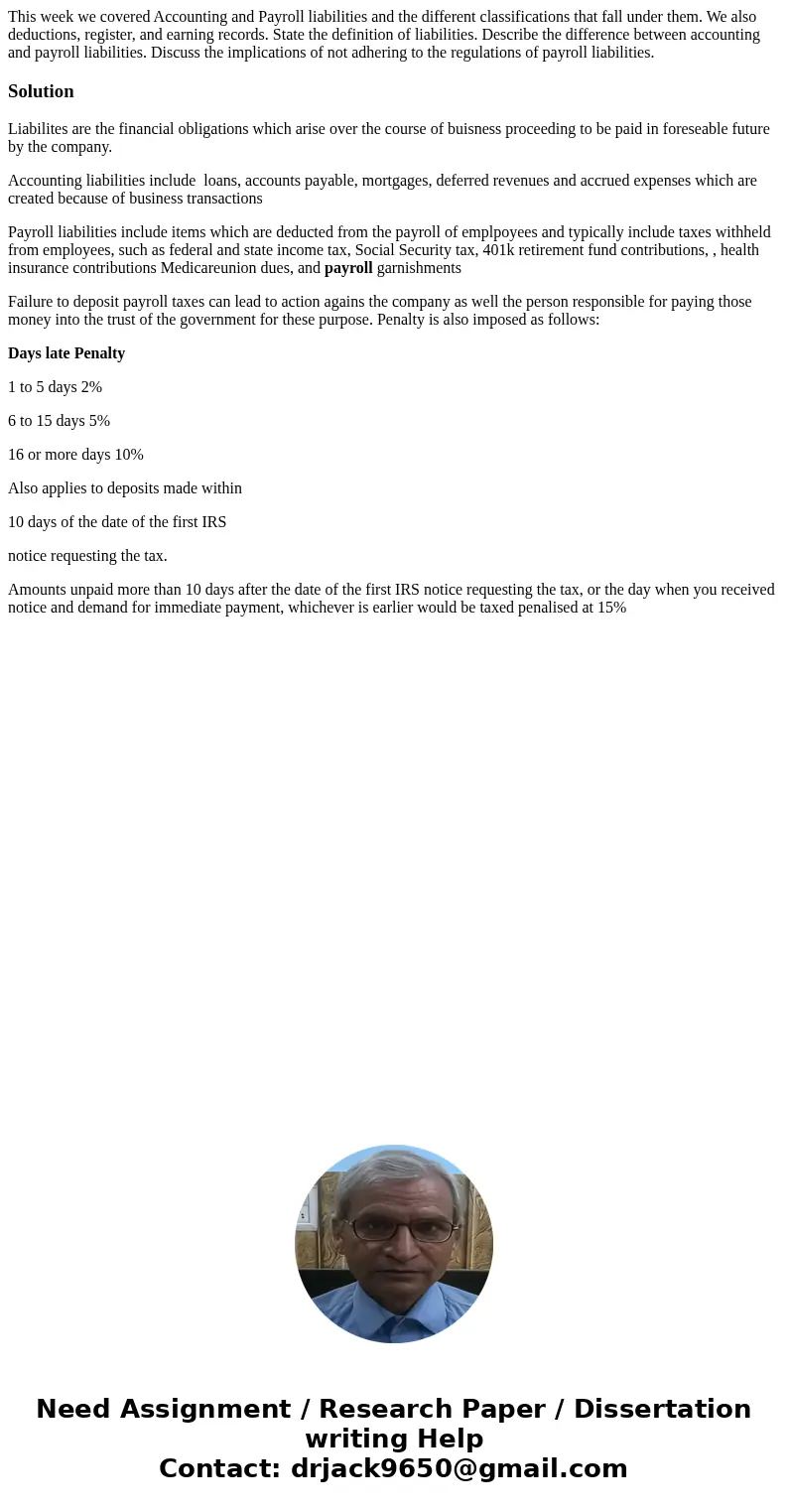This week we covered Accounting and Payroll liabilities and
This week we covered Accounting and Payroll liabilities and the different classifications that fall under them. We also deductions, register, and earning records. State the definition of liabilities. Describe the difference between accounting and payroll liabilities. Discuss the implications of not adhering to the regulations of payroll liabilities.
Solution
Liabilites are the financial obligations which arise over the course of buisness proceeding to be paid in foreseable future by the company.
Accounting liabilities include loans, accounts payable, mortgages, deferred revenues and accrued expenses which are created because of business transactions
Payroll liabilities include items which are deducted from the payroll of emplpoyees and typically include taxes withheld from employees, such as federal and state income tax, Social Security tax, 401k retirement fund contributions, , health insurance contributions Medicareunion dues, and payroll garnishments
Failure to deposit payroll taxes can lead to action agains the company as well the person responsible for paying those money into the trust of the government for these purpose. Penalty is also imposed as follows:
Days late Penalty
1 to 5 days 2%
6 to 15 days 5%
16 or more days 10%
Also applies to deposits made within
10 days of the date of the first IRS
notice requesting the tax.
Amounts unpaid more than 10 days after the date of the first IRS notice requesting the tax, or the day when you received notice and demand for immediate payment, whichever is earlier would be taxed penalised at 15%

 Homework Sourse
Homework Sourse